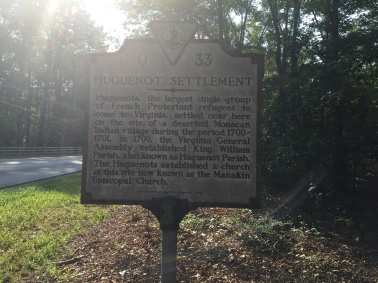
Yesterday I got up early to drive down to Manakin Episcopal Church in Midlothian, VA, for the service. I don’t consider church attendance a prerequisite for good research but I thought it might be interesting to spend some time in the area where one of the earliest Huguenot settlements was created.
Adjacent to the church is the building containing the meeting space and archives for the Manakin Huguenot Society, as well as the site of the Huguenot church. There is no evidence that Jean deJarnat was ever at the Manakintown settlement but the society has a number of resources and even allows membership for those who are descended from other French Protestant immigrants who arrived around the same time as the Manakintown settlers.
From the Manakin Huguenot Society‘s site:
Huguenots began coming to Virginia as early as 1620. In 1700-1701, five ships arrived at the mouth of the James River, then the York and the Rappahannock rivers, east of present-day Richmond, Virginia. French Huguenots, having fled religious persecution, had lived in England and Ireland and done military services for King William. They were granted lands in the New World for a permanent home where they had the freedom to worship as they pleased. West of Richmond, many founded a colony on the site of a village deserted by the Monacan Indians. This is a society of the descendants of that colony and French Protestants who came to Virginia before 1786…(1)
I had emailed the society’s librarian, Bryan, the week before and he had agreed to allow me
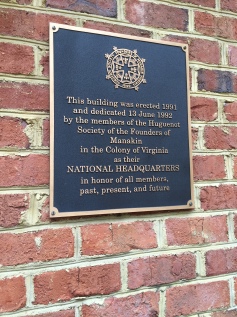
access to the archives after the service. Being the kind of person that sees a lot of detail in little things, I was very quickly overwhelmed by the amount of information contained in the archives. For myself, the most stressful thing about doing research is knowing what book, binder, or piece of paper to pick up. My instinct is to go through everything in the hopes that something pops out at me. In the interest of not being there forever, I picked a few things which I thought were most relevant to my current project.
Happily, and I say that in all seriousness, I came away with a lot more questions than answers. I am still in the process of organizing and documenting the information I have collected but I think we’ll see some interesting results when it’s all said and done. I’ve certainly found a number of starting points for further research.
On the site, this monument commemorates the first church built by the refugees:
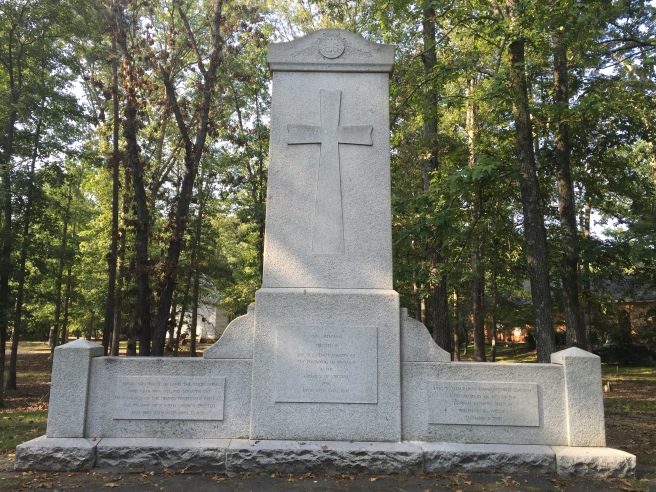

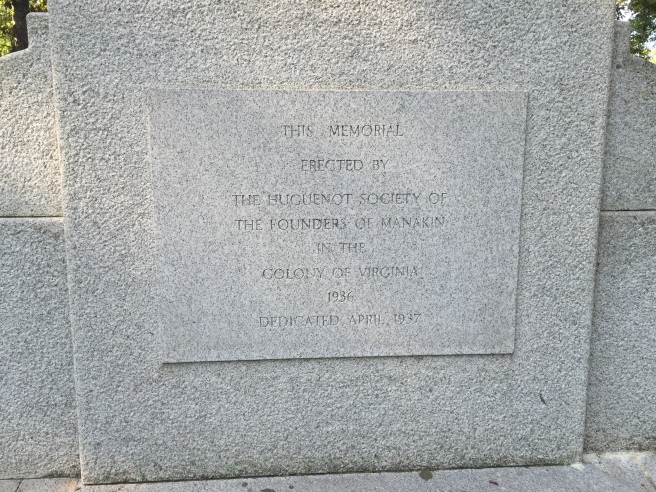
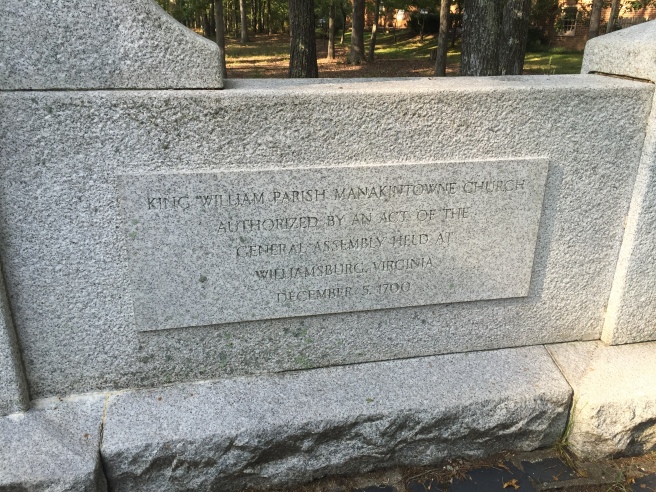
Crossing the James River as I drove to the church, I could almost imagine what it must have been like without the crisscross of roads and wires. I wonder if it seemed like a place that the Huguenots could call home. Did they see a future in Virginia or were they too concerned with survival to think about it?
Yesterday was September 11th, 2016, fifteen years after the terrorist attacks on the World Trade Center and Pentagon here in the US. Being in Virginia made me feel like I was looking into the past, seeing what the Huguenots saw through new eyes. I’ve not yet been to France but with the beautiful weather it made me wonder if the settlers recognized something of home in the landscape, or if what they recognized was perhaps the potential violence and terror of an uncertain life in a strange place: an unsettled future where their faith was the only thing they could rely on to keep them going.
Most interesting to me is the way in which myth making occurs when trying to reconstruct family history and history in general. As Napoleon said, “History is the version of past events that people have decided to agree upon.” There are sources which mention Jean or the deJarnat family but I am very much ready to take a closer look to see what, if anything, can be surmised with any measure of surety.
Sources.
-
“History of Virginia Huguenots and the Society.” Huguenot Society FMCV. Accessed September 12, 2016. http://huguenot-manakin.org/.
